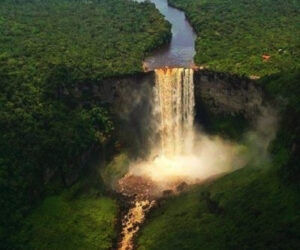With its diverse range of wildlife, attractive island refuges, and unspoiled sandy shores, alongside its role in influencing Charles Darwin’s revolutionary concepts of natural progression, the Galapagos stands as an ideal location for explorations via yacht charters that deviate from the ordinary route.
This rough volcanic cluster hosts an array of the Earth’s most varied flora and fauna, both in the aerial and aquatic realms, comprising 13 significant islands and several tinier isles and islets.
Exploring alongside hammerhead schools underwater and trekking across picturesque wild landscapes, the Galapagos Isles present exceptionally distinctive adventures absent in alternative locations. Our list of motives for endorsing a Galapagos yacht charter ought to be a must-have experience for all.
Top Reasons To Go For Galapagos Yacht Charter
Magnificent islands and islets
The Galapagos comprises thirteen primary islands, accompanied by six tinier isles and exceeding 100 islets, and every single one possesses distinctive traits.
Santa Cruz, the central island, functions as the core of the chain and harbors the renowned giant tortoises of the Galapagos. Moreover, the Charles Darwin Research Station gives an excellent chance to understand the incredible conservation and scientific inquiry endeavors across the entire archipelago.
Head west, and you’ll see Isabela’s largest island, situated beyond the equator, bearing a resemblance to a seahorse. Isabela’s dimensions span about 75 miles (120 km) vertically. The island harbors five active volcanoes, comprising the most notable Sierra Negra. Here, you have the chance to hike amidst fairly new lava streams or explore the Sulfur Mine, consisting of fumaroles located at the caldera’s southern tip, spanning a length of 10 km from its northern to southern extremes.
Espanola stands out as a frequently explored isle, offering an array of avian species such as Nazca boobies, Espanola mockingbirds, finches, swallow-tailed gulls, Galapagos doves, and red-billed tropicbirds.
Sea & Wildlife Preservation:
In 1835, this small group of islands in the Pacific gained global fame due to the ideas shared by British biologist Charles Darwin during his trip there.
A century after Darwin’s journey, Ecuador’s authorities set aside a significant section of the Galapagos for safeguarding wildlife. This area eventually transformed into the Galapagos National Park, acknowledged by UNESCO as a vital World Heritage location, securing the islands’ biodiversity and unspoiled charm for generations to come.
Unspoiled Beaches
Though surfing and sunbathing aren’t its primary draws, the Galapagos possesses an incredible variety of exquisite natural beaches. Due to their distinct volcanic roots, these shores exhibit diverse colors—ranging from crimson, amber, and emerald to ebony. Here, encountering a lounging sea lion is more probable than spotting a sunseeker.
Bahia Gardner
Also recognized as Gardner Bay, this mesmerizing stretch of palm-bordered shore showcases one of the most exquisite beaches globally, not just due to its extensive pure white sandy areas and vibrant turquoise oceans but also its profusion of aquatic creatures near the coastline. These range from agile Sally light-footed crabs to sea turtles, in addition to numerous tropical reef fish and multiple communities of sea lions. Exploring underwater with a snorkel proves to be the most optimal approach to witness these enchanting marine animals, typically congregating around the partially submerged tuff cone extending out in close proximity to the seashore.
Tortuga Bay
Situated at the southern edge of Santa Cruz island, this magnificent stretch of silver-white coral sands caressed by vividly azure waters serves as a nesting spot for ebony-hued turtles. They arrive annually from January to February, unfailingly choosing this site to lay their eggs during the nighttime hours at the remote extremity of the bay. Other noteworthy references encompass the beaches of Bartolome Island and Rabida Beach.
Lasting Memories
A luxury yacht charter Galapagos would offer a fantastic adventure you and your loved ones will never forget, allowing you to intimately explore the islands without interruptions of daily life. Sailing on a yacht charter in Galapagos enables a unique chance to connect with family, forging timeless memories far from the usual bustle and diversions of usual routines.
Galapagos Yacht Charter FAQs
How much does it cost for a Galapagos Island yacht charter?
Determining the cost of renting a Galapagos private cruise relies on factors like the yacht’s dimensions, design, and the duration of the voyage. With variables such as the chosen yacht, bargaining capacity, and the number of attendees, the expense of a private yacht charter Galapagos Islands might occasionally be notably lower per individual compared to reserving separate spots on a standard scheduled cruise.
When is the best time for a Galapagos Island yacht charter?
Determining a definitive solution here is quite complex! The Galapagos remains inviting throughout the year due to its equatorial position, offering unique attractions every month.
It’s important to note that securing reservations well ahead of time is crucial for a Galapagos yacht charter during popular vacation periods such as Christmas, New Year, Thanksgiving, Spring Break, and Easter. These high-demand dates are frequently booked years in advance, often at a premium cost.
What’s the ideal duration for a trip to the Galapagos to ensure I experience the main attractions?
To fully enjoy the key attractions of the Galapagos, we advise you to spend around 7 to 10 days. During this time frame, you can venture to various islands, come across a wide range of wildlife, and deeply engage with distinctive landscapes and ecosystems.
Is a 3 to 4-day trip to Galapagos worthwhile?
Even though a brief stay provides a peek at the Galapagos’ charm, we suggest extending it if feasible for a richer experience. A greater duration permits a more exhaustive experience, ensuring ample time to enjoy the rich wildlife, take part in a range of activities, and explore the unique traits of various islands.



